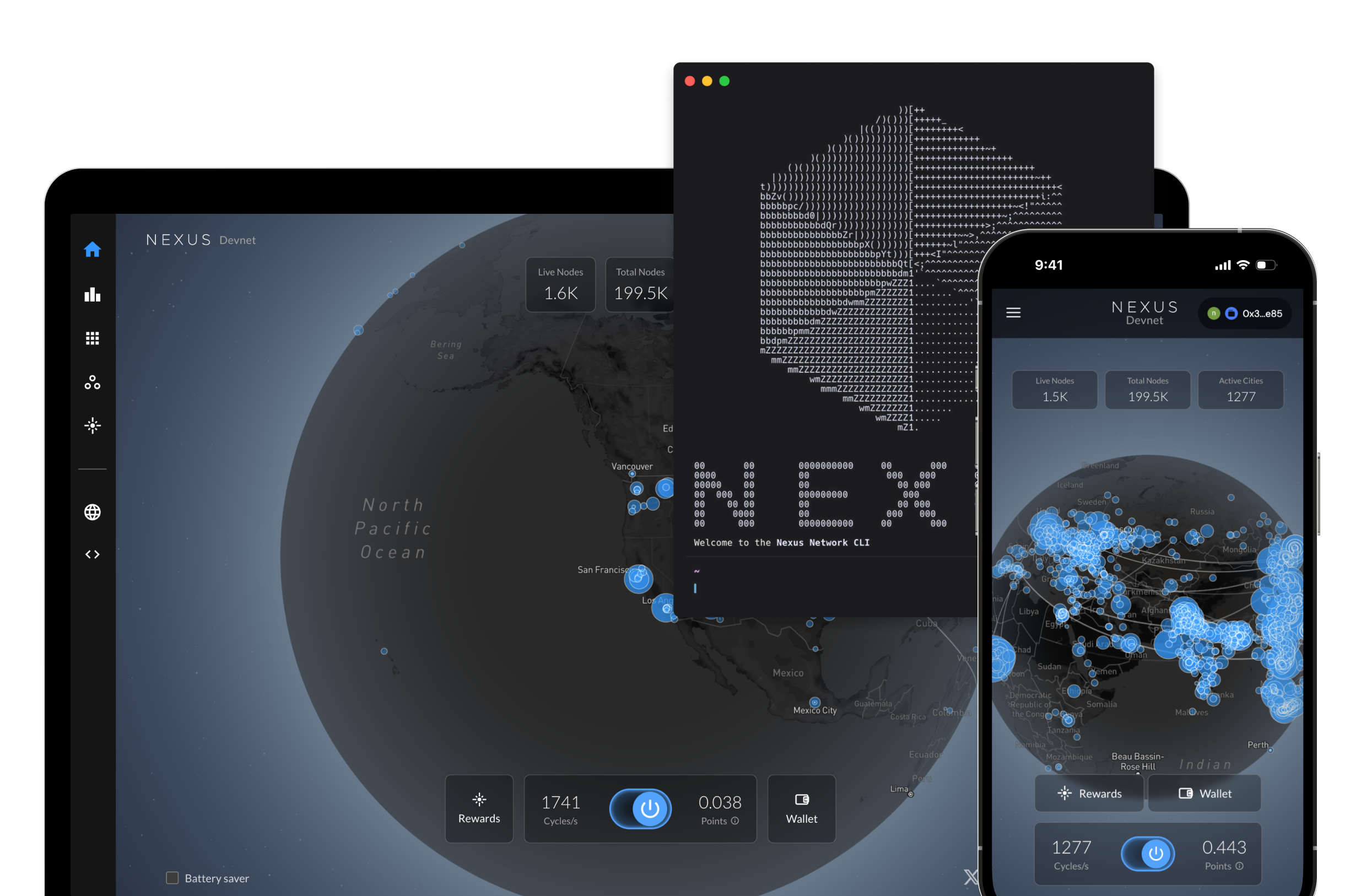
Why Proofs Matter
In a world increasingly run by opaque algorithms and black-box AI systems, cryptographic proofs help us move from assumptions to guarantees. Zero-knowledge proofs (ZKPs) let one party prove that a computation was performed correctly, without revealing the inputs or repeating the work. This unlocks a new primitive for a verifiable internet: trust in computation itself, secured by cryptography. With ZKPs, we can:- Audit AI models without exposing the data
- Prove that smart contracts executed correctly
- Verify off-chain work from on-chain environments
- Build systems that are private and provable
Network Components
The Nexus Layer 1 consists of two core components:Nexus Orchestrator
A coordinating service that:• Routes proving tasks across the network
• Verifies submitted proofs
• Tracks contributions and distributes rewards
• Maintains system integrity during early development
• Verifies submitted proofs
• Tracks contributions and distributes rewards
• Maintains system integrity during early development
Network Nodes
A decentralized network of contributors that:• Run the Nexus zkVM sources to the system• Submit completed work for verification
• Earn rewards for verifiable contributions
• Earn rewards for verifiable contributions
How Nodes Participate
Nexus nodes are the engines of the network. By contributing compute and generating proofs, nodes help secure the system and enable trustless computation at scale. Participation is open to everyone. There is no need for specialized hardware or deep technical knowledge. You can join with a single click in the browser or through the CLI if you prefer full control. Workflow for Node Participation:
1
2
Network Connection
The node connects to the Nexus Orchestrator and receives a proving task. This could be part of an AI workload, a smart contract execution, or a verification job from off-chain computation.
3
Proof Creation
The node runs the task using the Nexus zkVM and generates a cryptographic proof that the computation was executed correctly.
4
Work Submission
The proof is submitted to the Orchestrator, where it is queued for verification.
5
Verification & Points
Once the proof is verified, the node earns NEX Testnet Points in real time. These points reflect the value of the computation completed.
6
Token Distribution
NEX Testnet Points can be converted into NEX Testnet Tokens. This allows participants to earn directly for their role in scaling the verifiable internet.